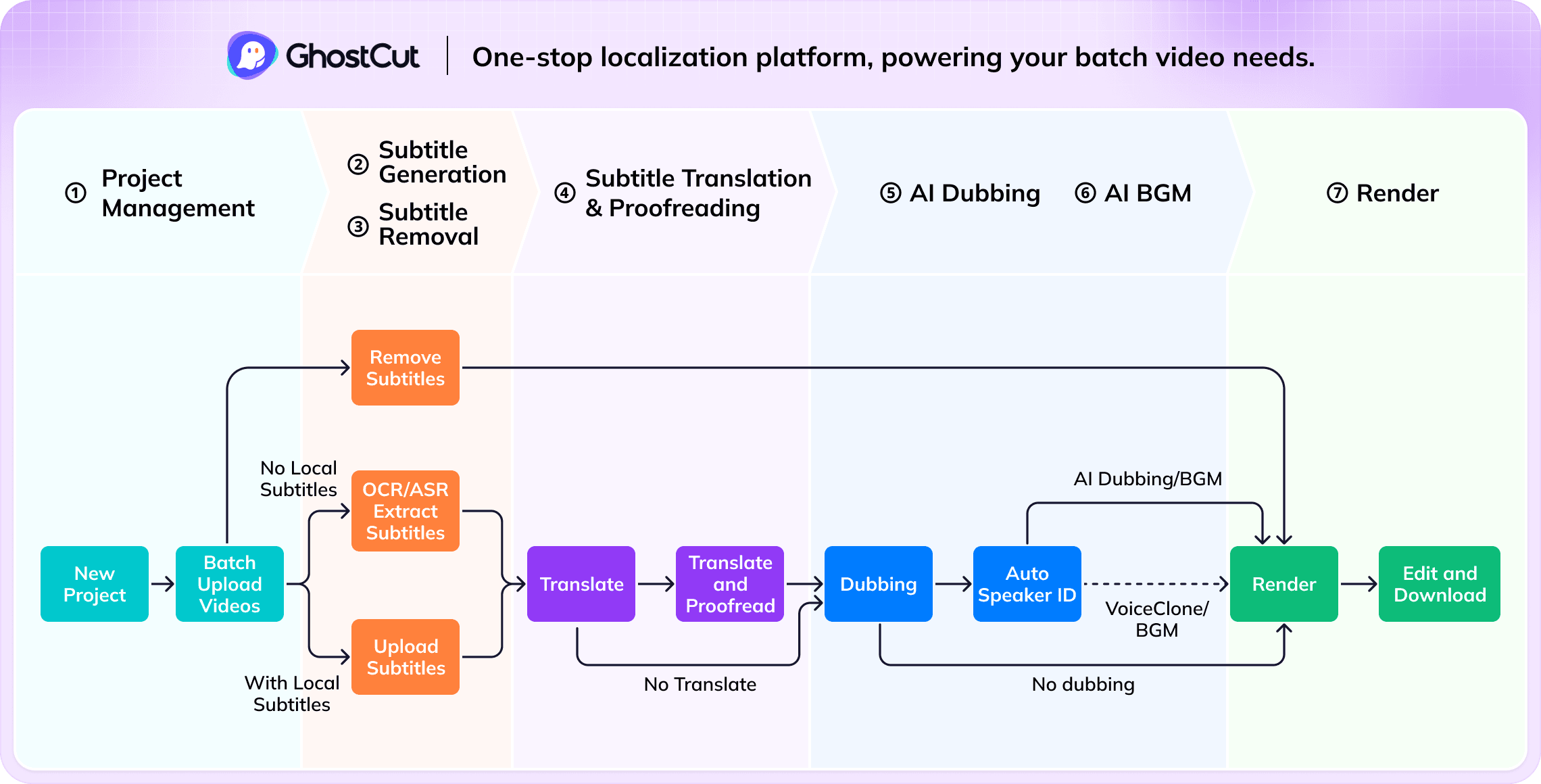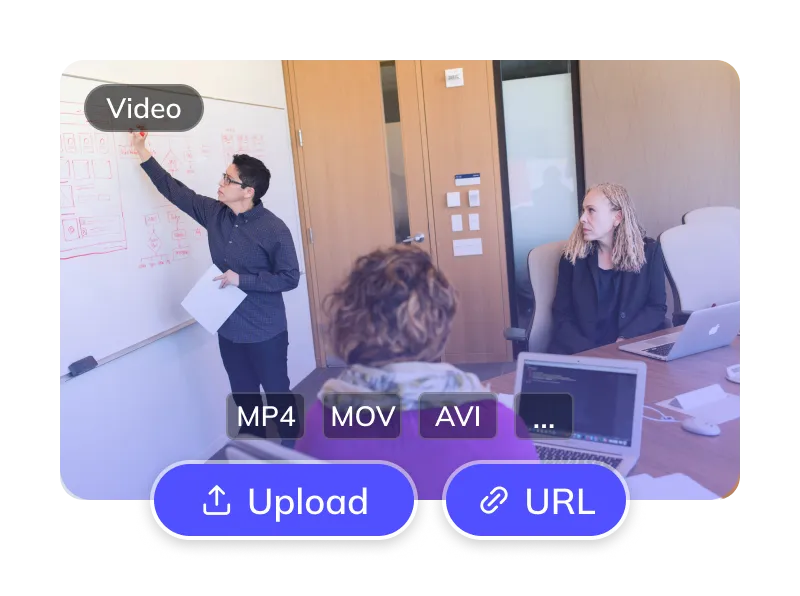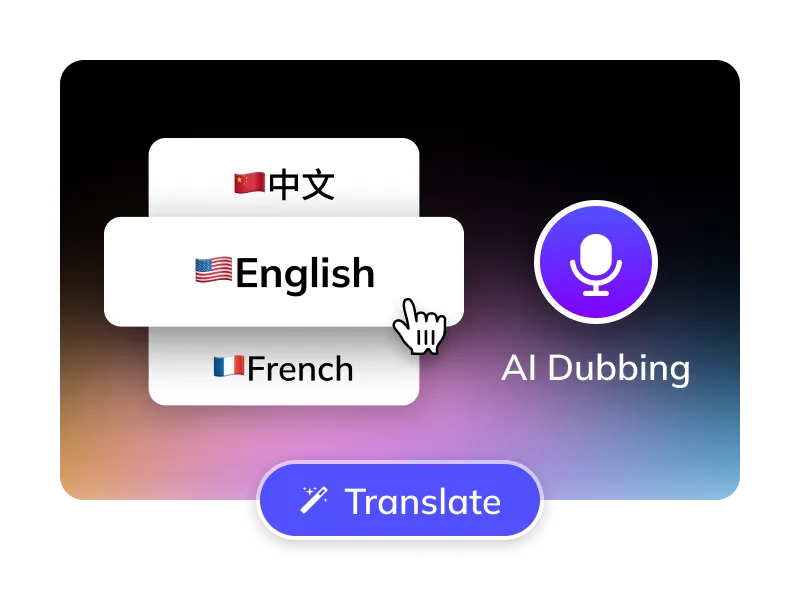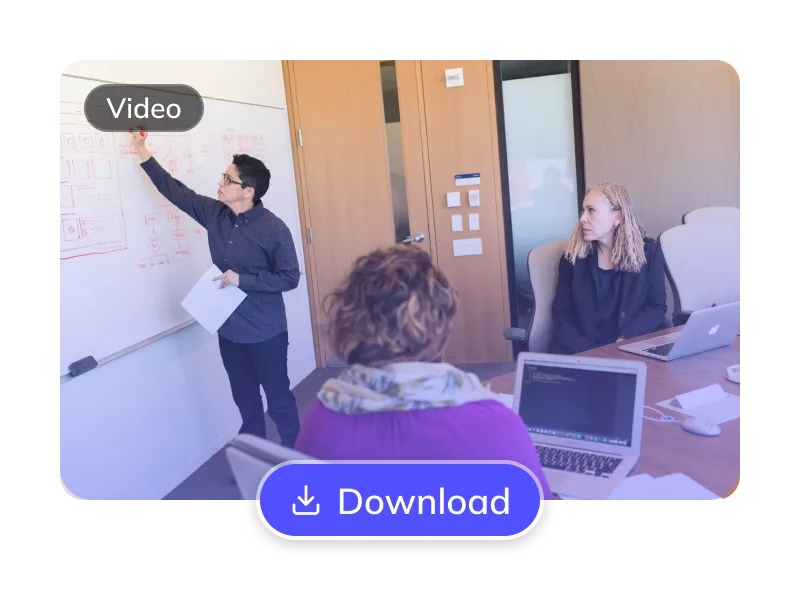How to Translate TV-Series Videos to English ?
Translate TV-Series Videos to Korean in 3 Easy Steps
Trusted by 1,500,000+ Global Creators and Businesses
Why GhostCut for Your Video Translations?
GhostCut is your all-in-one AI solution for translating TV-Series content into natural, engaging Korean.
Effortless Project Management
Manage TV-Series assets, subtitles, & Korean videos. Batch process projects efficiently.
Pinpoint Korean Accuracy
Up to 99.5% accurate. Optimized for TV-Series-to-Korean with LLM calibration & multi-agent review for culturally fluent Korean translations.
Lifelike Korean AI Dubbing
Choose from diverse, human-like Korean AI voices (US/UK accents). Emotion-cloning technology captures original tone for natural Korean delivery.
Flexible TV-Series Subtitle Options
Optionally erase original TV-Series hardsubs for a clean slate. Translate embedded TV-Series subtitles directly.
Smart Multi-Speaker ID (TV-Series)
AI detects multiple speakers in TV-Series videos. Assign or clone distinct Korean voices per character, with cross-episode consistency for complex Korean dubs (dramas, interviews).
Efficient Batch Processing & API
Batch translate and dub 100s of TV-Series videos to Korean at once. Seamlessly integrate with our robust API.
Versatile BGM Control
Keep or mute original BGM. Our unique tech can also isolate sound effects, meeting diverse copyright and distribution needs.
Unbeatable Value
Flexible TV-Series-to-Korean plans. Try core features free. Automated pro service from just $0.1/minute.
Easy Online Access
No downloads. Instantly translate TV-Series videos to Korean online. Works on Windows, Mac, & major mobile browsers for cloud processing anywhere.
The GhostCut Edge: Unmatched Accuracy, Speed, and Value.
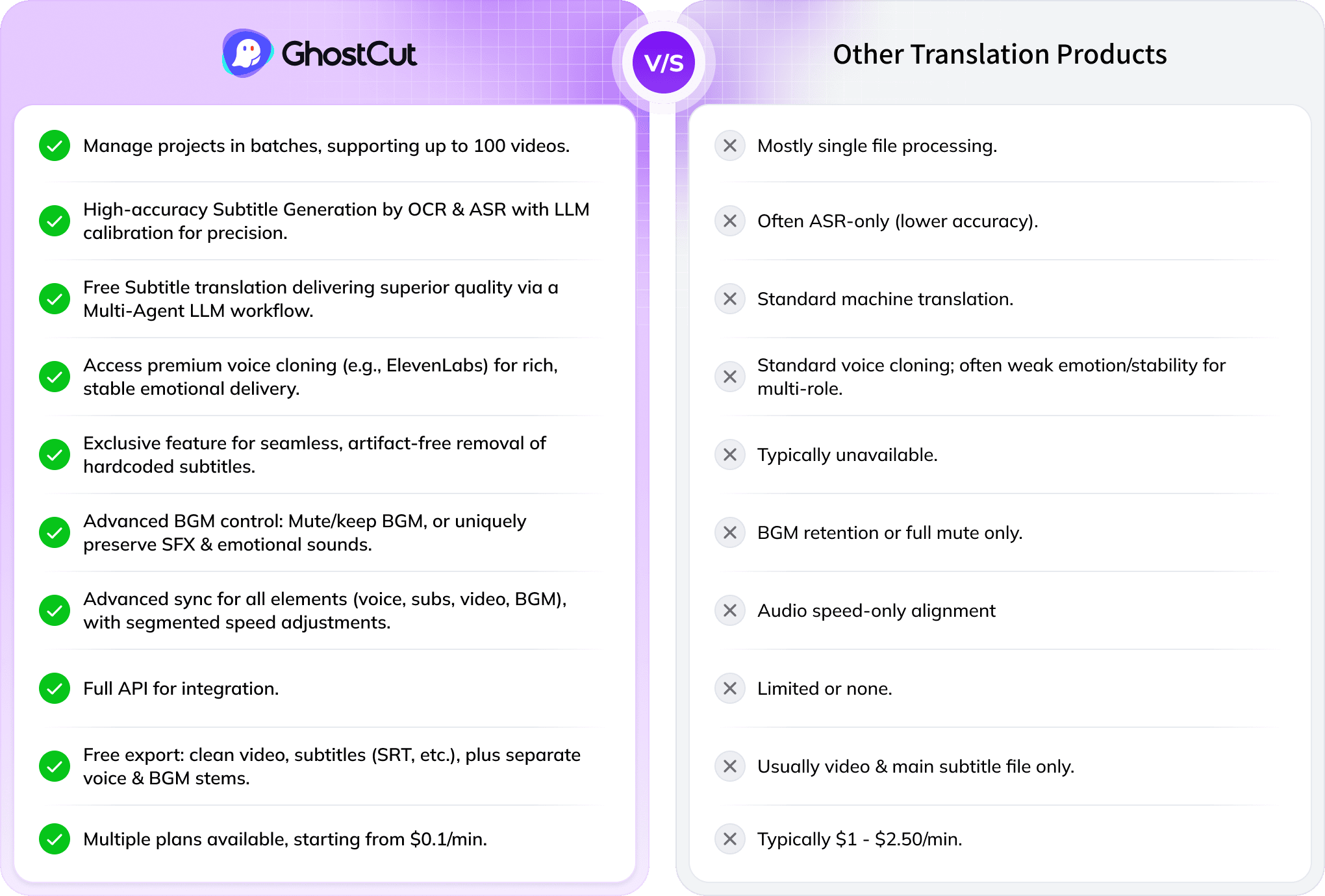
Every Algorithmic Optimization, Engineered for Quality Korean Video
Mastering Long-Form TV-Series Drama & Multi-Character Dubbing
Translating a 100-minute TV-Series drama with 4000+ lines and many characters into Korean is tough. Standard AI struggles to tell speakers apart, causing errors. GhostCut’s multi-modal AI (video, voice, text) excels in long-form, multi-speaker content, ensuring accurate, consistent character voices across entire series.
Translate Now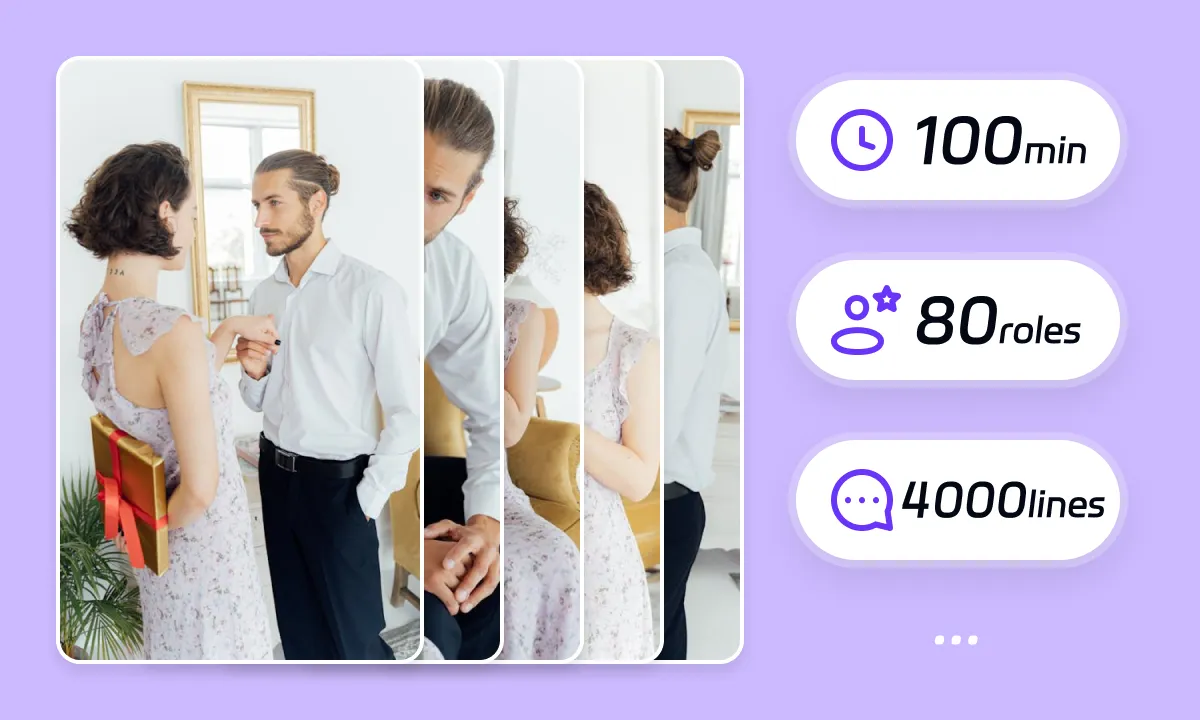
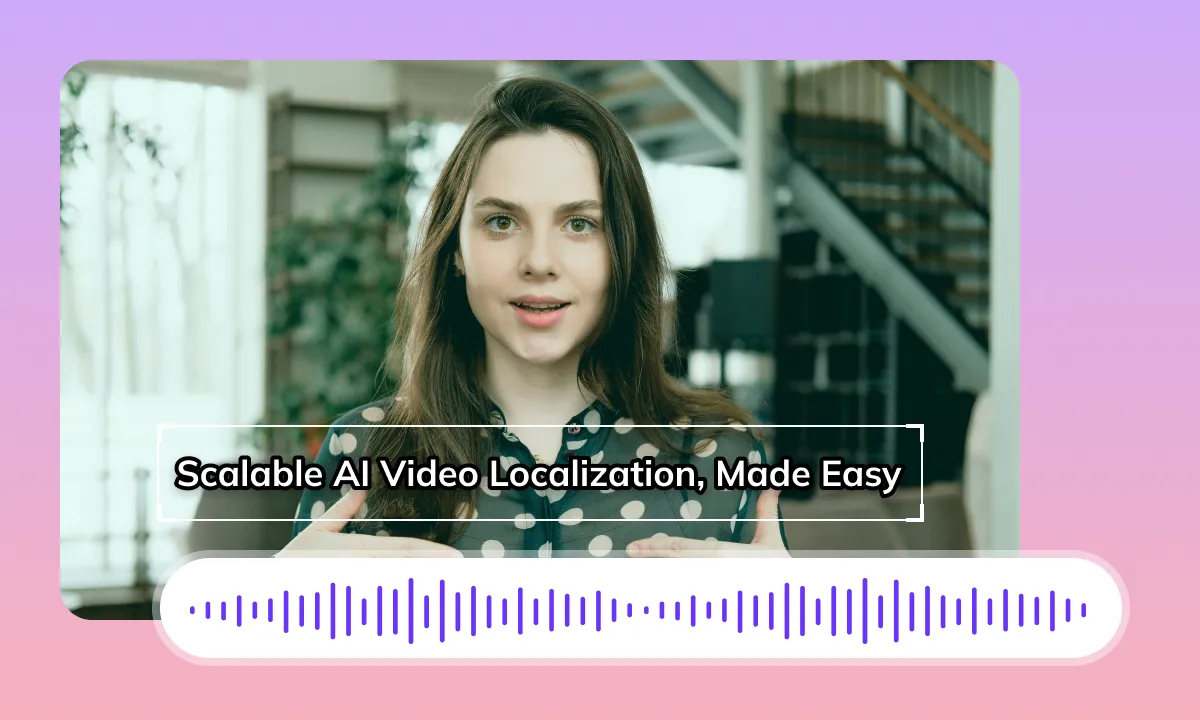
Seamless Korean Dubbing & Perfect Lip-Sync
GhostCut ensures natural Korean audio flow by treating related subtitles as whole ideas for TTS. It then precisely times new Korean subtitles. Since TV-Series-to-Korean translation can change speech length, our AI expertly adjusts the new Korean audio, subtitles, video, and BGM to maintain perfect sync, just like a seasoned editor.
Translate NowBoost ROI with Flawless TV-Series Subtitle Removal
Original TV-Series hardsubs can limit your video's global appeal. GhostCut’s AI doesn't just blur; it intelligently reconstructs the background obscured by TV-Series subtitles, even complex ones, for a perfectly clean, high-quality visual. This means better viewer engagement, longer watch times, and higher ROI.
Translate Now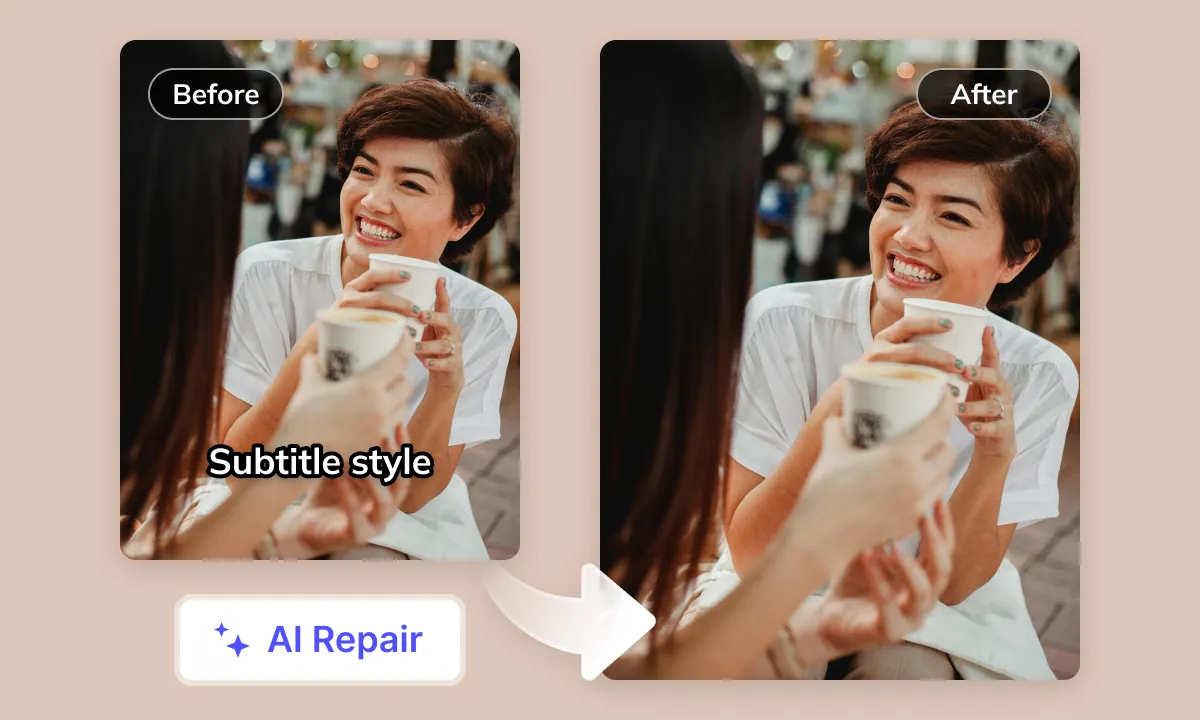
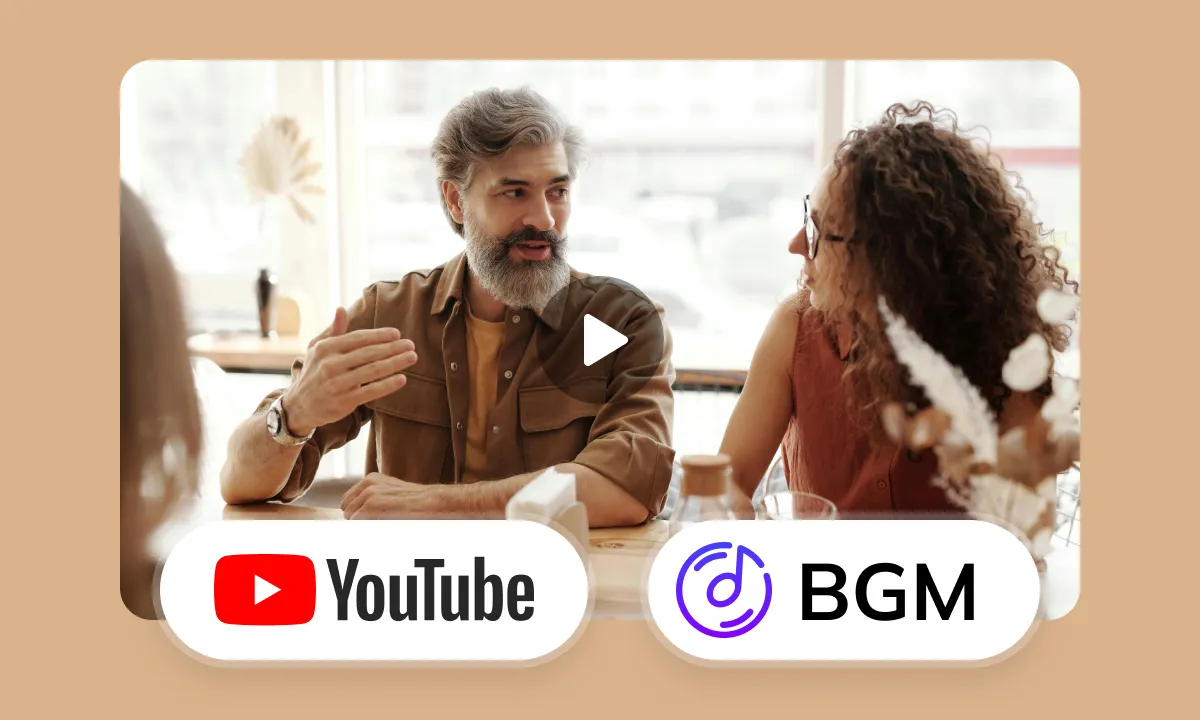
Smart Audio Control for YouTube Creators
Navigating BGM copyright on YouTube is tricky. GhostCut’s advanced audio separation isolates TV-Series dialogue for translation, while intelligently managing BGM, sound effects, and even emotional expressions. Our "Keep SFX, Remove Music" option is a creator favorite for avoiding copyright issues without losing your video’s impact.
Translate NowYour Drama Deserves Global Korean Viewership
Compelling Chinese dramas, boasting superb plots and acting, deserve to transcend borders and reach wider international markets. However, language barriers, particularly Chinese-to-Korean translation, frequently bottleneck these excellent works from entering the Korean market. Without precise Korean translation or dubbing, on any platform, a drama directly affects Korean viewers' understanding and experience, limiting its local dissemination and influence. Given this, the market urgently needs a professional, efficient AI solution to seamlessly and high-quality localize diverse drama content into Korean, allowing more Korean audiences barrier-free appreciation
TV Series Translation to Korean: Challenges and Considerations
Integrating Original Formats with Localization
Translating TV series into Korean requires managing the original video, audio, and subtitle formats. A fundamental challenge is seamlessly replacing or overlaying Korean content, whether through dubbing or subtitling, to ensure an optimal viewer experience and avoid conflicts with existing on-screen elements (e.g., text, occasional original audio bleed-through)
Bridging Cultural, Contextual, and Expressive Gaps
TV series from different countries carry unique cultural, social backgrounds, and human dynamics. Specific historical terms, social memes, interpersonal titles, and expressive habits in Chinese dramas differ significantly from Korean culture. The core difficulty lies in accurately conveying the original meaning in authentic Korean while retaining the original flavor, avoiding stiffness or misunderstanding. Natural dialogue and emotional expression are crucial for Korean audiences
Pacing Adaptation for Subtitles and Dubbing
TV series feature extensive and continuous dialogue. For Korean subtitles, it's crucial to consider subtitle length, display duration, and line breaks to match Korean reading habits and on-screen pacing, avoiding information overload or rapid disappearance. For dubbing, adjusting the length and speed of Korean lines to closely align with the original characters' performance rhythm is key to dubbing quality
Capturing and Recreating Vocal Nuances and Emotion
Vocal performances in TV series convey rich emotional and tonal information. Accurately translating these nuances into Korean and re-enacting them through voice actors (or advanced AI voice) requires a deep understanding of the original audio and precise mastery of Korean expression. Finding appropriate Korean equivalents and perfectly rendering specific emotional outbursts or whispers presents a significant challenge
Handling Original Audio Track Complexity
Original TV series audio tracks may contain background noise, ambient sounds, various sound effects, and variations in character volume and distance. When performing speech recognition (e.g., for script generation or AI dubbing), effectively separating dialogue, identifying different speakers, and handling accents, rapid conversations, or overlapping speech directly impacts the accuracy of subsequent translation and dubbing
Selecting High-Quality Korean Dubbing
Whether sourcing professional Korean voice actors or using AI voices, the sound must perfectly match the character's age, personality, and emotional state. A natural, expressive Korean voice library adaptable to various drama genres (e.g., historical, modern, comedy, tragedy) is crucial for ensuring translation quality. For AI voices in particular, the naturalness of their emotional curve still requires refinement
Lip-Sync and Visual Synchronization
For TV series dubbed into Korean, achieving visually 'perceived synchronization' between Korean pronunciation and the original on-screen characters' mouth movements is a critical technique for enhancing the viewing experience. This requires precise timeline adjustments and pronunciation choices for dubbed lines, a challenge particularly pronounced in close-up shots
Ideal Workflow for Korean TV Series Translation
A top-tier Korean TV series translation should achieve: highly accurate original script acquisition (overcoming audio complexity) - authentic, expressive Korean translation that considers cultural differences (adhering to Korean linguistic norms) - professional or high-quality AI Korean dubbing (emotionally rich, voice-matched, aiming for lip-sync) or precisely timed Korean subtitles - seamless integration of audio, video, and text to provide an immersive viewing experience
Tackling Video Translation Challenges with AI Empowering your TV-Series content for any worldwide scenario.
Your All-in-One AI Translation Studio
GhostCut offers more than just TV-Series-to-Korean translation. It's a complete AI-powered workflow: subtitle extraction 、 removal 、 translation and proofreading to multi-character dubbing , BGM processing, and final rendering. Go from TV-Series source to global-ready videos, effortlessly.
